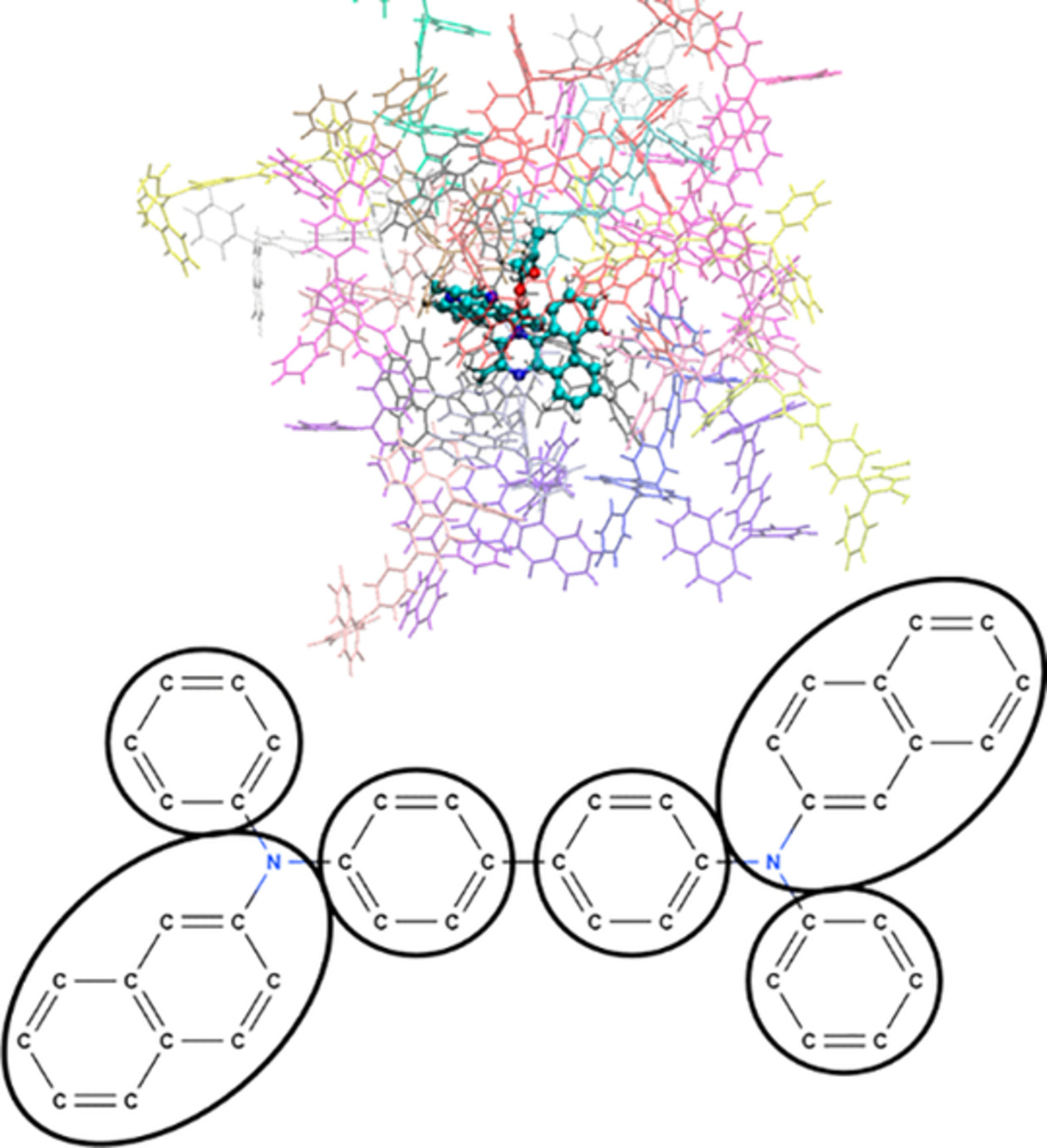Use of effective fragment potentials for simulation of excited states in an inhomogeneous environment, Int J Quantum Chem. 2020;120:e26071.
By Nikita O. Dubinets Alexandra Y. Freidzon Alexander A. Bagaturyants
 Singlet and triplet spectra of phosphorescent organic light‐emitting diode dopants such as bis(2‐methyldibenzo[f,h]quinoxaline)(acetylacetonate)iridium(III) in inhomogeneous amorphous hosts are simulated by time‐dependent density functional theory (TDDFT) using molecular dynamics and effective fragment potentials (EFPs). The EFPs of the host molecules N,N′‐di(1‐naphthyl)‐N,N′‐diphenyl‐(1,1′‐biphenyl)‐4,4′‐diamine and 4,4′‐bis(N‐carbazolyl)‐1,1′‐biphenyl are constructed from small fragments. The procedure for breaking large molecules into fragments and constructing an EFP is presented. It is demonstrated that polarizable inhomogeneous environment affects the position, intensity, and width of the spectral bands and, therefore, should be taken into account in accurate simulations of spectral bands.
Singlet and triplet spectra of phosphorescent organic light‐emitting diode dopants such as bis(2‐methyldibenzo[f,h]quinoxaline)(acetylacetonate)iridium(III) in inhomogeneous amorphous hosts are simulated by time‐dependent density functional theory (TDDFT) using molecular dynamics and effective fragment potentials (EFPs). The EFPs of the host molecules N,N′‐di(1‐naphthyl)‐N,N′‐diphenyl‐(1,1′‐biphenyl)‐4,4′‐diamine and 4,4′‐bis(N‐carbazolyl)‐1,1′‐biphenyl are constructed from small fragments. The procedure for breaking large molecules into fragments and constructing an EFP is presented. It is demonstrated that polarizable inhomogeneous environment affects the position, intensity, and width of the spectral bands and, therefore, should be taken into account in accurate simulations of spectral bands.
